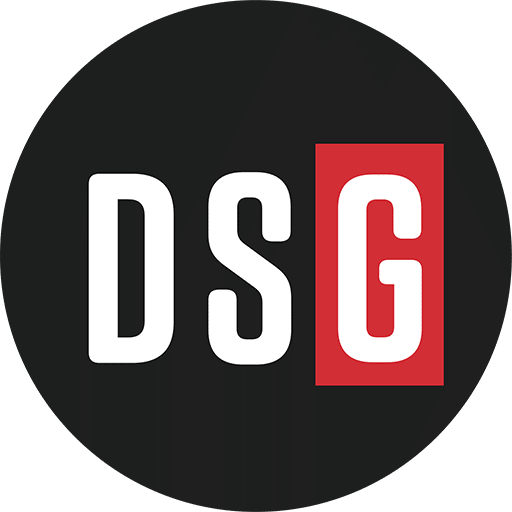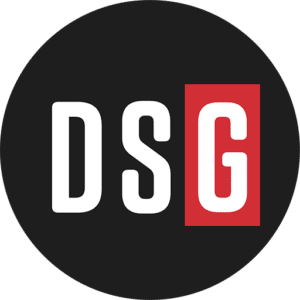Before you put pen to paper on your next move, know what the customer wants. That’s Tony Harris’s take on growth in the new year.
Get a picture of what the customer cares about before you start developing a roadmap for change.
In a recent Wholesale Change podcast, we spoke with Harris, THINC B2B founder and CEO, about how and why distributors need to realign to drive growth in 2023.
Distribution Strategy Group: Will you tell us how you started THINC B2B and what you’ve been working on recently?
Tony Harris: I started THINC B2B with the focus of helping companies grow in an exuberant fashion. Eighty percent of my time with THINC B2B is spent helping CEOs and their boards make better decisions. Another 20% is spent tactically involved in various executions. THINC B2B focuses on helping distributors and manufacturers execute well, make better decisions and grow their companies.
The most important part of this is understanding customers’ expectations and understanding what a customer wants before you go and design something. When I say “design” something, it may be a sales strategy, an ops strategy or an ecommerce strategy. But, it should all be built around what the customer wants.
DSG: That sounds like fascinating work. You’re also a partner at Intelligentics, right?
Harris: Right. Intelligentics was a natural acquisition path for me because we conduct user experience studies and explore how to take the voice of the customer and apply it to the strategies you need to grow your gross profit and new customer count. How do you grow customers to look like your best customers? Intelligentics is when intelligence and tactics meet – thus the name.
DSG: What kind of intelligence are you gathering? And how does that knowledge lead to better tactics and outcomes?
Harris: Let’s break it into a bifurcated model and look at your website versus actual customer engagement. Let’s say you’re a distributor, and you think it’s time to dust off your site and make some changes. Maybe marketing and other areas are communicating that the site isn’t as active as it should be and that traffic is waning. What you do is bring in Intelligentics, for instance, and conduct individual interviews.
Gathering this information isn’t simply putting a feedback plug-in on the site to say, “Tell us what you think.” That’s a sleepy way of getting answers, and it’s not very accurate. Instead, a really good voice-of-the-consumer study and user-experience study involves physically having a conversation with various customer segments.
Think about the 80/20 principle – 20% of your customers will drive 80% of your profit. I’m interested in profit. So we cherry-pick that 20% and ask them what they care about. What are the things about your site experience that are great? What are the things that are lacking? Ask those questions first. When you bring all that information together, you have a great picture of what the customer cares about before you’ve even started developing a roadmap for change.
It’s also important to ask why they chose you as a distributor. What is it about you that they like compared to five of your competitors? If they didn’t choose you, why not? Then, you can use that data (and maybe a little bit of a gut check) to create a different experience for that customer and keep them sticky.
DSG: You are a prominent figure in the SEO/SEM world but also talk a lot about SOS (Search on Site). Can you tell us what that is and why it’s getting more of your attention?
Harris: SEO is what you do to your site to improve the experience. It helps you get from page eight of Google to page one. But the area where a lot of distributors that also sell direct are not focused on is what I call SOS, which is Search On Site.
How are you studying the search box on your website? What are people putting into it, and at what frequency? What SKUs are showing positive traction for you? Once you mine that information, you’ll learn customer behavior fairly quickly. Comparing search bar stats to what’s happening with your external traffic search gives you a nice view of what customers care the most about.
This is all onsite intelligence. This is the area to capture. The future of search on site is having a team deployed either internally or externally to optimize your search. The first step is to understand search on your site. Then, as users go through the customer journey, you can start to recommend things not only based on what they’re shopping for but based on what they’re putting into the search box.
DSG: What do you expect for the future of onsite search tools?
Harris: User experience is essential; a dusty site will drive traffic away. So keep your site fresh and keep your content fresh. What I see in the future is what we might call “search agents.” So, imagine in the future, if you’re a registered user, you’re granted an AI search agent. That search agent will help you traverse the site and load your cart. You can ask them questions, and they’re only focused on you.
One thing I do with clients is to remind them that no matter what the economy is doing, no matter what the business is doing, they need to target two or three innovations for their company. The minute you stop innovating or at least thinking about what you can do to move the needle and give your customer something different and unique is the minute you stop progressing. Innovate. Never stop.
DSG: There are many sectors where considerable business is going through the shopping cart. In other areas, customers do a lot of shopping, research, evaluating and assessing online, but they’re not buying through the cart; they’re buying through EDI or other traditional purchasing methods. Many distributors see less than 1% shopping-cart revenue and view their ecommerce site as a failed initiative.
We prefer to think of the shopping-cart function in B2B as a point guard in basketball – some score by taking direct shots, while others score by passing. A shopping cart doesn’t have to make direct sales to be valuable – it may be passing along leads to other departments. What are your thoughts on this?
Harris: That’s an interesting point of view. One of the things I would look at is engagement. Engagement KPIs need to be more relevant than the number of cart transactions. Look at abandoned carts and completed cart transactions, but also look at how you’re engaging with that potential target offsite. When you do that, you’ll see a lot more shopping.
You’ll see more shopping because, over the past three years, people have been in an environment where they’ve spent more time online. Even in the world of B2B, people have gotten used to searching for things. They’ve gotten used to going to three, four or five different places to find a deal or price they’re looking for. They’re doing a lot more shopping. Even though they’re not necessarily transacting, that shopping has value.
When you have a site that’s abundant with content and SKU coverage, monitor that behavior. Monitor it coming from upstream, then monitor it coming from downstream. Then you can figure out how to bring leads back. For example, send a message and say, “Thank you for visiting us today. We see you didn’t load your cart. What can we do to earn your business?” Those are the kind of automated initiatives marketers need to start thinking about.
DSG: Let’s talk about the idea of data capturing, data provisioning and tributaries.
Harris: Sure. So when I think of data provisioning, a lot of my ideas have come from the companies I work with. They’re starting to decide whether they should be involved in a marketplace, so I have to start thinking about what we should do with data provisioning. For example, do we keep everything within our fiefdom and deny access to it? Or, as we work through strategies, do we create a tributary to our digital ocean?
What I mean by this is “going fishing.” Find all the tributaries out there that may have net new customer potential that you don’t have coming directly to you. Then, parse out data based on who you’re sharing it with. Have confined agreements so they can’t take your business later or get in your pocket, but provision them out like they’re fishing holes.
All tributaries lead to one ocean. If you’re fishing in one spot, and it’s hot, and you’re getting lots of new leads, that’s great. But, if there’s a tributary you’re working in, and you’re not getting any new customers or growing your business, cut it off and move on to the next watering hole. These kinds of fishing or watering holes in our world can vary. They can be marketplaces, buying groups or paid programs. But, the whole goal is to lead it all to your ocean of new business and net new customers and new profit.
DSG: We like to say that product content isn’t king – it’s the emperor. What is your opinion on product content? Where is it going, and what does that mean for us?
Harris: Two words: accuracy and abundance. You want to have very accurate product details and content for your site. It has to be abundant, and it has to be accurate because the people who shop with you can smell a rat a mile away. They’re looking for more information related to specifications, like the weight, size and even 3D models.
If you’re a distributor, you’re going to get content from the manufacturer. So let’s say you’re a channel partner of a manufacturer who has 300 other channel partners. Everyone is getting the same information to put on their website and use with their materials. I always try to communicate at the highest level of an organization, especially at the C level, to support your team and their efforts to create custom content.
If your brand has differentiated, accurate content, that makes you more specialized. Customers will keep coming back to you because there’s something unique that you’ve done with the same information. So take that content, scrape the frosting off, and redress that cake. Then, it’ll be unique to your business and your customer set.


